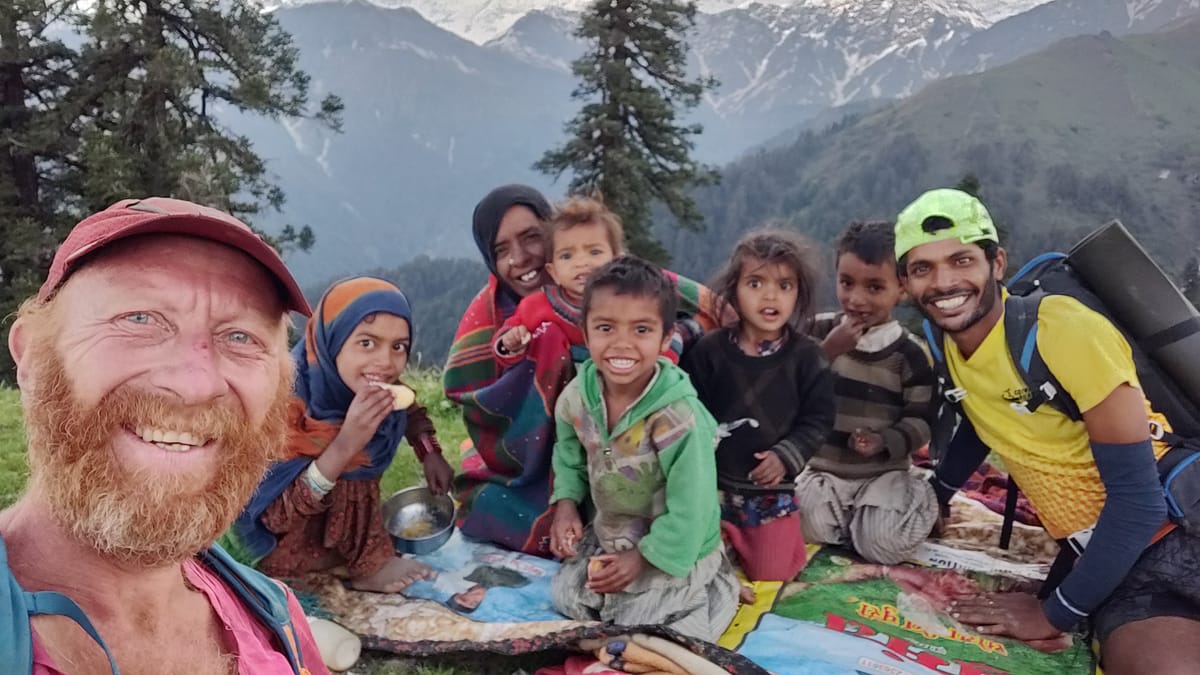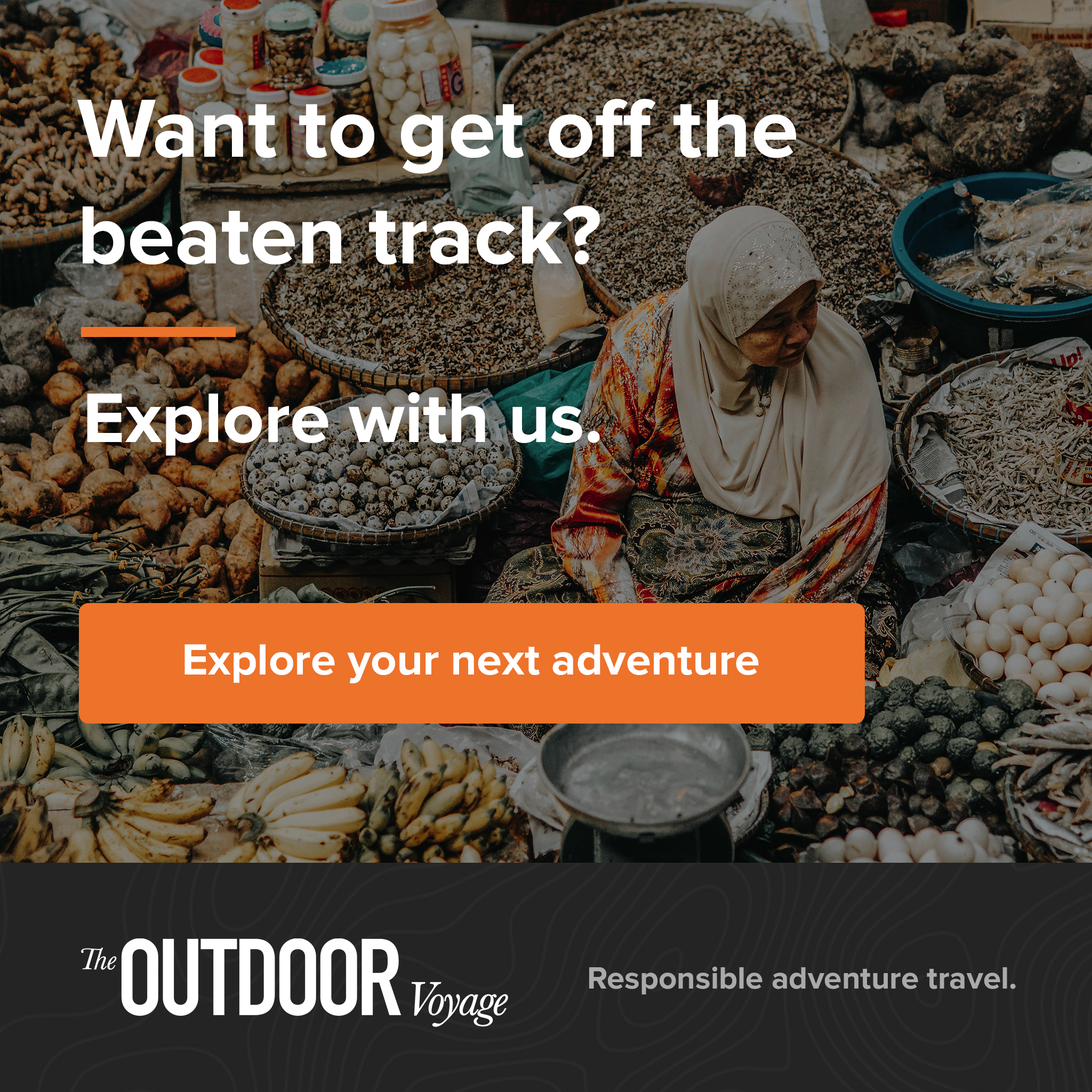Trans Himalaya 2019: First Contact
In his first contact since embarking on a 2,500 km self-supported journey last month, Peter Van Geit ventures deeper into the most remote corners of the Himalaya.

Last month, The Outdoor Journal introduced an alpine-style journey for the ages in which wilderness explorer Peter Van Geit, along with filmmaker Neil D'Souza, embarked on a 2,500 km self-supported journey across 100+ Himalayan high passes in Himachal, Ladakh, and Uttarakhand. Now more than one month into their journey, Peter shares the first field notes update from their psychedelic experience amidst the mountains.
After exactly one month since the start, I completed the first section of my journey, the state of Uttarakhand East to West starting from the border of Nepal until entering the neighbouring state of Himachal today. Uttarakhand has been mesmerizing - lush green forests, countless small hamlets, virgin valleys, beautiful paths and trails connecting villages, overwhelming hospitality.


In total, I crossed 127 hamlets in the state, some very remote hidden deep inside the mountains, climbed across 27 passes touching the snowline near to 4000m, hiked through 27 valleys in between the passes, some with many hamlets and farmlands, some uninhabited virgin jungles, crossed several wild streams, saw various wildlife including a black bear, monkeys and deer.
Read next on TOJ: Field Notes: Solo Ultra-Running the High Himalaya


Aside the stunning natural beauty, what touched me most was the remote hospitality of Uttarakhand. Especially while passing through remote tribal settlements where very few or no travelers would have ever crossed, people were extremely friendly and warm, inviting me in for food and a night's stay without expectations. In many homes, I was treated as if I was their own son, as they showed concern about my well-being and guiding me to the next pass.


The most memorable night stays were those with the "Bakris" or shepherds who roam the entire summer in remote sections of the high mountains grazing the "bugyals" or meadows with hundreds of their sheep. They are truly your best friends in the remotest corners of the Himalaya. Staying with them around a warm campfire in the cold high altitude nights, sharing yummy rottis (flat breads) with "sabji", fresh goat milk, lying on your back and watching the night skies lit up with millions of stars, listening to a 20 year old Philips radio playing Hindi songs from All India AM radio. That experience is out of this world.


The most challenging parts of the journey have been those where we lost the path or where the trail fades out in the jungle. You then have to scramble across steep valley slopes, sometimes dense thorny vegetation, cross wild streams, hang on to trees and roots climbing across landslide sections, rely on contour maps to navigate your way around vertical cliffs, etc. The intensity of the effort and calories burned multiplies manifold once you go "off trail" finding your way through the jungle towards the next hamlet or pass.

Towards Western Uttarakhand near to the neighbouring state of Himachal Pradesh we came across remote fairytale villages built from beautiful natural stone and wood. We discovered ancient wooden temples beautifully handcrafted by previous generations. Homes have several vertical levels with beautifully crafted terraces, animals staying below and people on top.


Most hiking groups usually select 1 pass and take a week to acclimatize and cross the pass over several campsites. Doing 27 passes in one month, or nearly one each day requires a lot of endurance and speed. Going minimalist and lightweight is the key to go faster, with less food and less night stays in between. Proper nutrition and night rest is key to keep up the daily momentum of some 30-40km with an average elevation gain of 3,000 meters. You easily burn 5,000 calories for each pass crossing which needs to be refueled in the villages in between.

The entire trip so far went alpine style using offline contour maps, pre-planned trails and some local guidance here and there. 85% was on proper trails and paths between the villages and passes, 15% was "off trail" scrambling through jungles and valley slopes. Most of the night stays are near villages and in people's homes, a lesser number in the wild and near the passes with the shepherds. We usually cross passes in between valleys in 1-2 days and carry only enough food ration with us. Each day usually starts at 5 am and goes till sunrise targetting the first village out of the forest in the next valley. No rest days so far with approximately 800 km covered and 70 thousand meters elevation gain.
According to Peter, his only objective is to inspire others to explore these beautiful locations. You can read more about Peter's experiences and motivations in his interview here - Alpine-Style, Ultra-Challenge in the Himalayan High Passes. Stay tuned on The Outdoor Journal for Peter's next update along his 2,500 km journey.
To follow Peter’s expedition, visit his blog.
Facebook: @PeterVanGeit
Instagram: @petervangeit
Chennai Trekking Club
For more Neil Productions, visit: http://neil.dj/
Facebook: @neilb4me
Introducing The Outdoor Voyage
The Outdoor Voyage booking platform and online marketplace only lists good operators, who care for sustainability, the environment and immersive, authentic experiences. All listed prices are agreed directly with the operator, and we promise that 86% of any money spent ends up supporting the local community that you’re visiting. Click the image below to find out more.






Comments ()